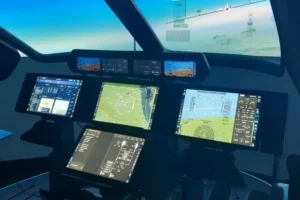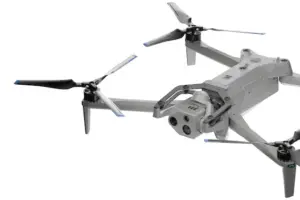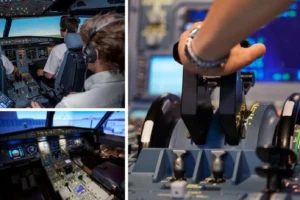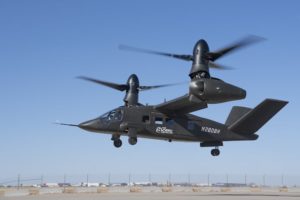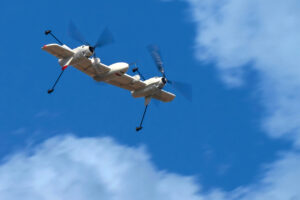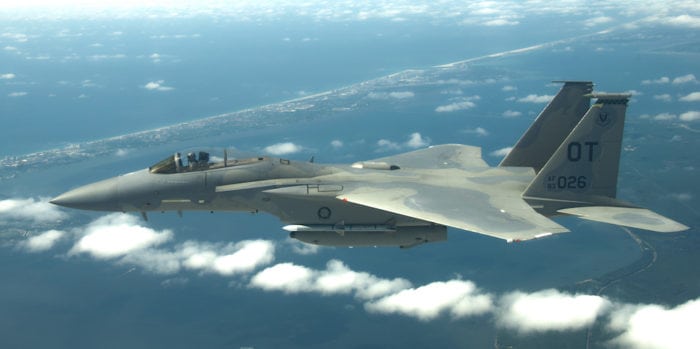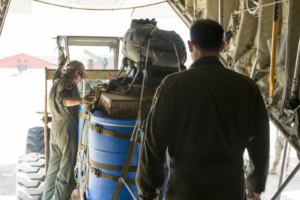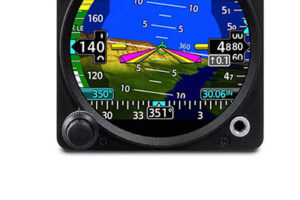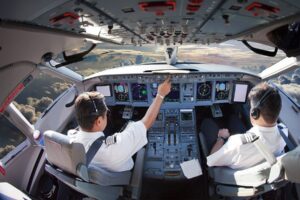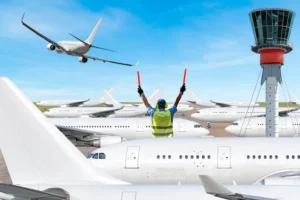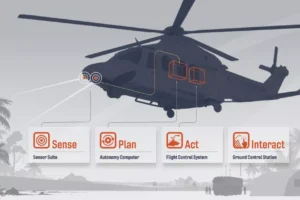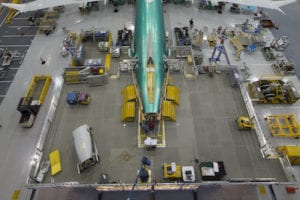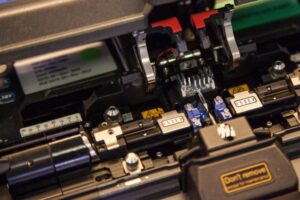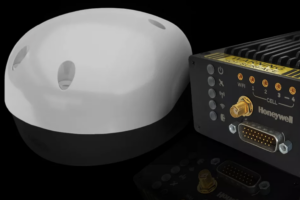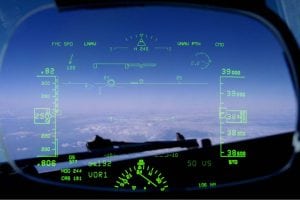Collision Avoidance Squared
By Harry Kraemer | October 1, 2003
Send Feedback
One goal of systems integration is to save precious real estate in the cockpit. Aviation Communication & Surveillance Systems (ACSS), a company jointly owned by L-3 Communications and Thales, has done its part toward that goal with its new T2CAS, certified in February 2003. T2CAS is an aircraft performance-based terrain avoidance warning system (TAWS) combined with a traffic alert collision avoidance system (TCAS), providing both aural and visual alerts. More than saving space on the aircraft, this two-system combination lowers acquisition cost, weighs less than two independent systems, and lowers power consumption.
T2CAS also is available as an upgrade to the ACSS TCAS 2000. ACSS has a growing list of customers for T2CAS, including Aero California, Aeromexico, Air Atlanta Icelandic, Federal Express, Mesaba, Northwest Airlines, Qatar, the U.S. Customs Service, and Virgin Express. In addition, ACSS announced at this year’s Paris Air Show that Airbus will begin offering T2CAS as a supplier-furnished equipment (SFE) option, beginning in late 2004. A supplemental type certificate (STC) for T2CAS will be available on Citation V and Citation Ultra business jets beginning in early 2004.
ACSS invited me to their Phoenix facility to fly with T2CAS installed in the company’s C90 King Air–the same aircraft in which the system was first flown, Oct. 23, 2002. I met with Rick Ridenour, ACSS engineer and flight test pilot.
For a side-by-side comparison of the T2CAS’ autonomous TAWS module and a competitor’s stand-alone TAWS, Ridenour first had me "fly" both units in a flight simulator in ACSS’ lab. The simulator was preprogrammed with a scenario involving a missed approach to Colorado’s Aspen-Pitkin Airport, a difficult destination in the heart of the Rocky Mountains. Identical flight parameters were fed to both boxes.
The scenario was first run to show what would happen if the aircraft followed the warnings from a competitor’s TAWS. As the aircraft turned and neared the terrain, we ignored the T2CAS cautions and warnings, awaiting the competitor’s TAWS alerts. When the competitor’s TAWS eventually issued a "Pull Up!" warning, the simulation rolled wings level and initiated a maximum performance climb. However, it was too late; the simulated aircraft could not climb above the terrain.
We reran the scenario, this time following the alerts from the T2CAS. It issued a caution and then an "Avoid Terrain!" warning. The simulated aircraft was maneuvered to avoid the terrain, all before the other TAWS offered a single caution.
Now I’m sure that in most instances, the other TAWS would serve a pilot quite adequately. All TAWS are required to meet stringent technical standard order (TSO) C151a and b standards. And Ridenour admitted Aspen-Pitken represents a "tight" scenario. But the demonstration showed that the TAWS module in the T2CAS–developed by Thales and called the Ground Collision Avoidance Module (GCAM)–could "look" further ahead into the turn and give an earlier warning.
The T2CAS’ farsightedness comes courtesy of the GCAM’s collision prediction alerting (CPA) function, which incorporates algorithms that factor in aircraft position and trajectory as well as the terrain and airport database. Other stand-alone TAWS systems also provide various levels of hazard prediction. But what makes T2CAS unique is that it combines predictive data with aircraft performance data, commonly furnished by the original equipment manufacturer (OEM), to create a climb-rate model that projects the aircraft’s escape capability. It digitizes the climb performance data–which factors in the aircraft’s gross weight, pressure altitude, outside temperature, etc.–and stores the data as a look-up table in the system’s Aircraft Specific Database (ASDB). Ridenour points out that this unique function provides terrain avoidance information, not just terrain proximity warnings.
The CPA function also eliminates most nuisance alerts because the alerts from the T2CAS are based on when the aircraft must maneuver to avoid terrain, not on a fixed time before possible impact. Some conventional TAWS systems give an alert at a fixed time before impact for a range of relative terrain elevations, irrespective of how long the aircraft will take to climb over the terrain. However, T2CAS provides alerts based on when the aircraft must react in order to climb over the terrain.
Clearance Sensors
To further explain the CPA’s predictive capabilities, Ridenour told me that the system’s algorithms compare aircraft position with the terrain database to create "clearance sensors," which provide both a short-term and long-term perspective down the aircraft’s flight path. Like virtual "curb feelers," these sensors "protrude" a fixed time in front of the aircraft. The sensors first "look" along the aircraft’s vertical flight path for a perspective that is deemed "short-term" but still provides adequate reaction time. This short-term portion is 20 seconds long for the caution sensor and eight seconds long for the warning sensor. The clearance sensors then look up the potential climb gradient of the aircraft for an additional 112 seconds to provide a long-term perspective. The construction of the clearance sensor allows for early alerting in the case of high terrain (up to 132 seconds in front of the aircraft), and later alerting for lower terrain.
Additionally, T2CAS has a unique feature known as the terrain advisory line, or TAL. The TAL provides a graphic indication to the pilot of where a caution will occur if the aircraft continues on its flight path.
Ridenour likens the TAL to the yellow lines along the edge of a highway that indicate where the "rumble strips" start. "The rumble strips are analogous to the cautions and warnings," says Ridenour. "They are the flashing lights and clanging bells that are the last resort. The TAL, on the other hand, is analogous to the yellow line along the side of the road that let’s you know how far is too far, before you go too far. It is unobtrusive and provides additional situational awareness. The TAL gives you situational awareness before a condition requiring an alert develops."
Three Scenarios
Flying the ACSS King Air out of Phoenix-Deer Valley airport, I tested the GCAM in three TAWS scenarios:
- Imminent terrain impact,
- Dynamic turn into terrain, and
- A non-precision approach with a premature step-down or descent.
Starting with the imminent terrain impact scenario, Ridenour aimed the aircraft straight for a 4,500-foot mountain peak. We were flying at 4,000-foot mean sea level (MSL), 500 feet below the peak. When we approached the mountain, the yellow TAL appeared on the display. As we got closer, I could see the line getting closer (moving down) the map display, indicating that we were nearer to the initial TAWS alert. As we continued towards the peak, the first aural caution announced "Terrain Ahead!" over the cockpit speaker. We were about 2 nm from the mountain. We continued on our collision course, and the system announced "Terrain Ahead, Pull Up!" This was the warning to initiate a vertical recovery.
In our second scenario, we flew along a valley, parallel to a high ridge, and then turned into the ridge, simulating a bad vector from ATC. We heard "Terrain Ahead!" but continued our turn and then heard "Avoid Terrain!"
ACSS added "Avoid Terrain!" to its alert vocabulary because the normal means of recovery from "Pull Up!" may not be enough of a pilot response to ensure safe terrain clearance, in which case other options should be considered. For example, in our scenario, it was better to turn away from the ridge while climbing. With "Avoid Terrain!" pilots are likely to act more intuitively, which often is to do the opposite of what caused the alert.
For the final GCAM demonstration, a GPS approach with several step-down fixes to the Casa Grande (Ariz.) airport was loaded into our flight plan. We planned an early descent, as if the approach plate was misread or we became confused on the approach. Several small hills rose up along the final approach path. Again, the TAL appeared on the screen early in our approach. It indicated that if we continued our premature descent, we would face trouble. Nevertheless, we continued, and the system gave us our first caution, "Terrain Ahead!" followed by "Terrain Ahead, Pull Up!" in a more urgent tone.
TCAS Function
The demonstration flight gave me considerable experience with the T2CAS’ ground-avoidance function, but little with the traffic avoidance function. Understandably, I couldn’t fly aggressively into traffic.
I can report, however, that the T2CAS incorporates the TCAS 2000, which is installed as an independent unit in more than 6,000 aircraft. The T2CAS comes in a 6-MCU (modular concept unit) and in a 4-MCU version. The latter does not include the 115-volt AC power and GPS receiver.
Like stand-alone TCAS II, the T2CAS surrounds the aircraft with two levels of protected airspace, referred to as the collision area. The outer, caution area of airspace has a 20- to 48-second perimeter around the aircraft, indicating the time in which an intruder aircraft could cause a midair collision. When the intruder penetrates this area, T2CAS issues a traffic advisory (TA), or heads-up that an aircraft is nearby. The inner warning area has a 15- to 35-second perimeter, in which penetration by an intruder aircraft will trigger a resolution advisory (RA), or suggested avoidance maneuver. T2CAS has a 100-nm surveillance range and the ability to track 50 aircraft at once.
The TCAS function worked as expected. I was most impressed, however, by the performance-based TAWS function.


